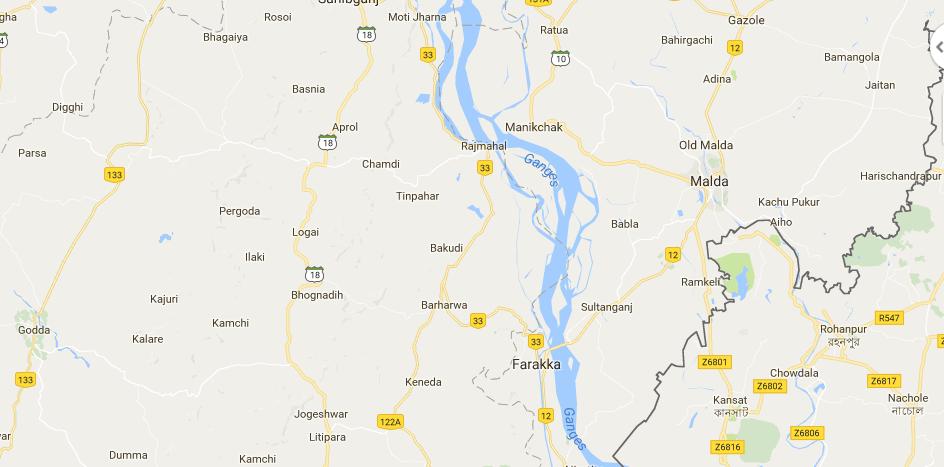Mahananda River
Mahananda River is one of the prime tributaries of the Ganga River in the eastern part of India. The origin of this mighty Mahananda River is from the extreme north of West Bengal from the stunning hills of Darjeeling at an elevation of 2100 km. Originating from this beautiful hill station the Mahananda River, then flows southwards through the fertile agricultural area of Bihar and enters West Bengal flowing past English Bazaar. From Darjeeling to Bihar and after entering through Uttar Dinajpur district in West Bengal, Mahananda River, then flows in the southeast direction in to Bangladesh, near Tentulia in Panchagarh District.

(Source: maps.google.com accessed on 10.06.2016)
The journey of the Mahananda River is still not complete and the river
merges into Ganges, at Godagari Ghat after flowing for 225 miles (360
kilometers). The major tributaries of the Mahananda are Balason, Mechi,
Ratwa and Kankai. It has three tributaries in the Siliguri area called the
Trinai, Ranochondi and the pair of Chokor and Dauk taken as a single
tributary. The total drainage area of the river is 20,600 sq. km. of which
11,530 sq.km. lies in India. The river finally enters Bangaldesh and joins
Ganag at Godagiri.
One of the most interesting facts about the Mahananda forms in its upper course an important linguistic boundary between the Bengali and the Hindi speaking areas and communities. The Mahananda River is mainly fed by the monsoons and floods occur in this river as well. It has a low water level during the summers or winters.
(Source: www.indiatravelguide.com/bihar/mahananda-river.html accessed on 25.05.2016)